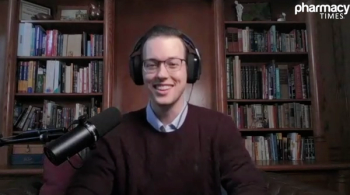
Lung Cancer Screening Rates Increase, but Remain Low Overall
Despite recommendations for adults to receive lung cancer screenings, rates have remained low compared with other cancer screening programs.
The prevalence of lung cancer screenings (LCS) was at a higher rate in 2021 than in 2019 but remain low compared with other population-level cancer screening programs, according to the results of a study published in the Journal of the American Medical Association.
The study investigators used data from the 2021 Behavioral Risk Factor Surveillance System (BRFSS), which was collected from January 2021 to January 2022 and included the states of Rhode Island, New Jersey, Maine, and Michigan.
Study data included individuals aged 55 to 79 years with at least a 30-pack-year smoking history who currently smoked or quit within the past 15 years. The study excluded respondents who disclosed a history of lung cancer.
The sample included 112,399 respondents who underwent LCS (mean [SD] age, 65.7 [5.8] years); of that sample, 49.5% were males, 50.5% were females, and 86.7% were White. Of the sample, prevalence of LCS was 21.2%, which was an increase of 8.4% from 2019, the results of the study show.
Respondents who reported undergoing LCS were likely to have a high pack-year smoking history (mean [SD], 57.3 [49.6] pack-years; 95% CI, 50.8-63.8 pack-years), and the mean (SD) time since quitting smoking was 6.9 (4.6) years (95% CI, 5.8-8.0 years), according to the results of the study.
Further, of the respondents who underwent LCS, 4.5% (95 CI, −4.5% to 13.5%) had no health insurance and 27.7% (95% CI, 16.0%-39.5%) reported poor health, the results of the analysis show.
When compared with data from White respondents, there was a higher likelihood of LCS for those who self-reported belonging to racial and ethnic groups other than White, Black, Hispanic, or multiracial (OR, 8.89 [95% CI, 1.81-43.71]; P = .01), the study results indicated.
Continuing, the results of the study showed that those who reported having a primary health professional (PHP) had a higher likelihood of undergoing a LCS compared to those without a PHP (OR, 5.62 [95% CI, 1.19-26.49]; P = .03). Compared to respondents aged 65 to 77 years, the likelihood of those with a PHP obtaining LCS was lower for those aged 55 to 64 years (OR, 0.43 [95% CI. 0.23-0.81]; P = .01) and 78 to 79 years (OR, 0.17 [95% CI, 0.04-0.80]; P = .02).
The necessity of this study can be seen when looking at data from the 2019 BRFSS, which showed that only 12.8% of eligible adults were given a CT scan to check for lung cancer, despite recommendations from the US Preventive Forces Task Force (USPFT) endorsing LCS, the investigators noted.
The researchers said their findings highlight the importance of Medicare coverage in LCS, but also mentioned some limitations to their findings, including the sample population being restricted to only 4 states.
“Disparities in LCS uptake among eligible adults remain and will likely continue with the updated USPSTF recommendation increases the number of Black adults who are eligible for LCS,” the researchers wrote. “Research to identify facilitators for LCS among persons who currently smoke is needed, including a focus on the role of stigma as a barrier to screening.”
Reference
Maki G K PhD, Tan Q P N PhD, Toumazis I, PhD, et al. Prevalence of lung cancer screening among eligible adults in 4 US states in 2021. JAMA Netw Open. 2023;6(6):e2319172. doi:10.1001/jamanetworkopen.2023.19172
Newsletter
Stay informed on drug updates, treatment guidelines, and pharmacy practice trends—subscribe to Pharmacy Times for weekly clinical insights.













































































































































































































